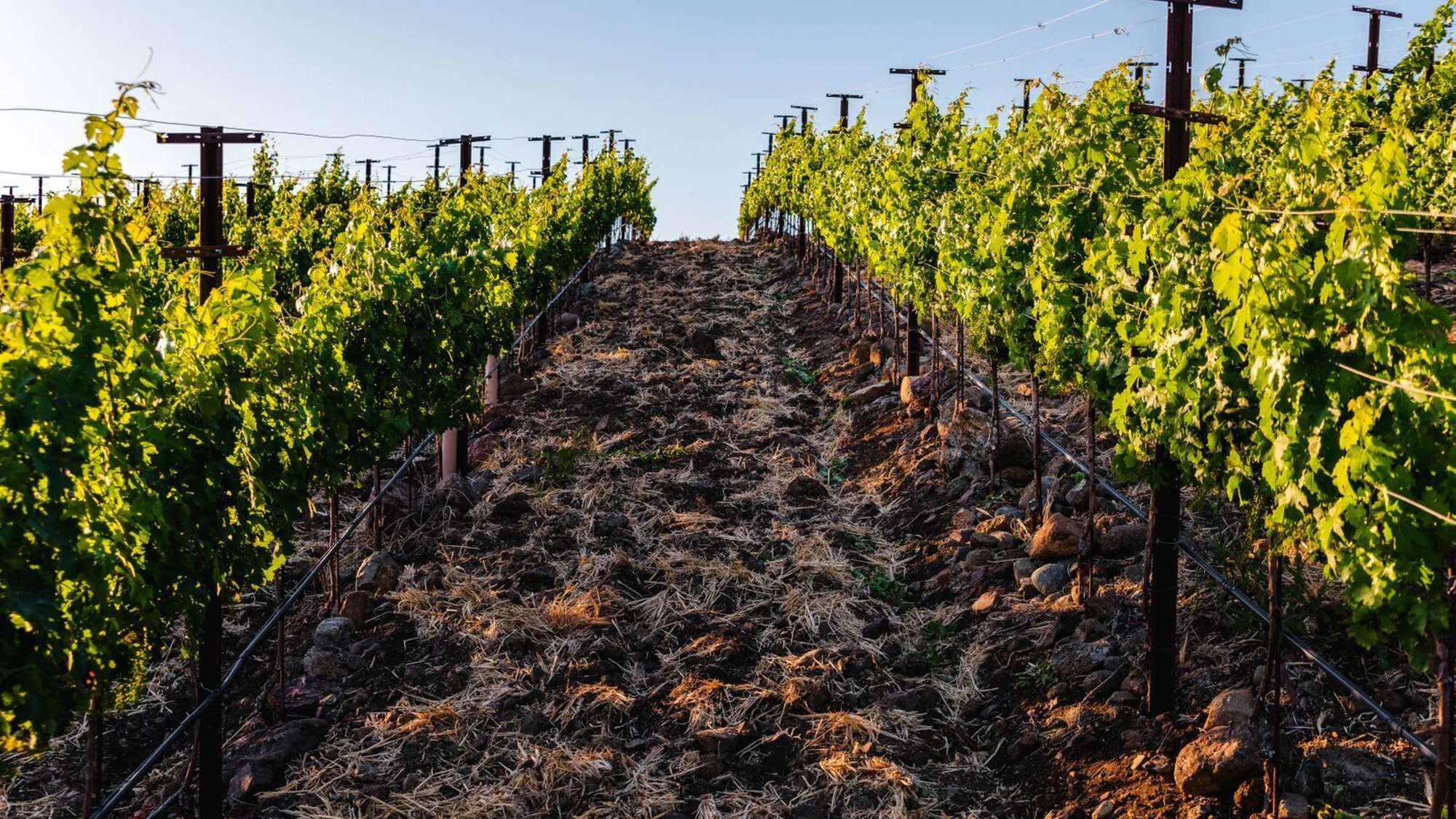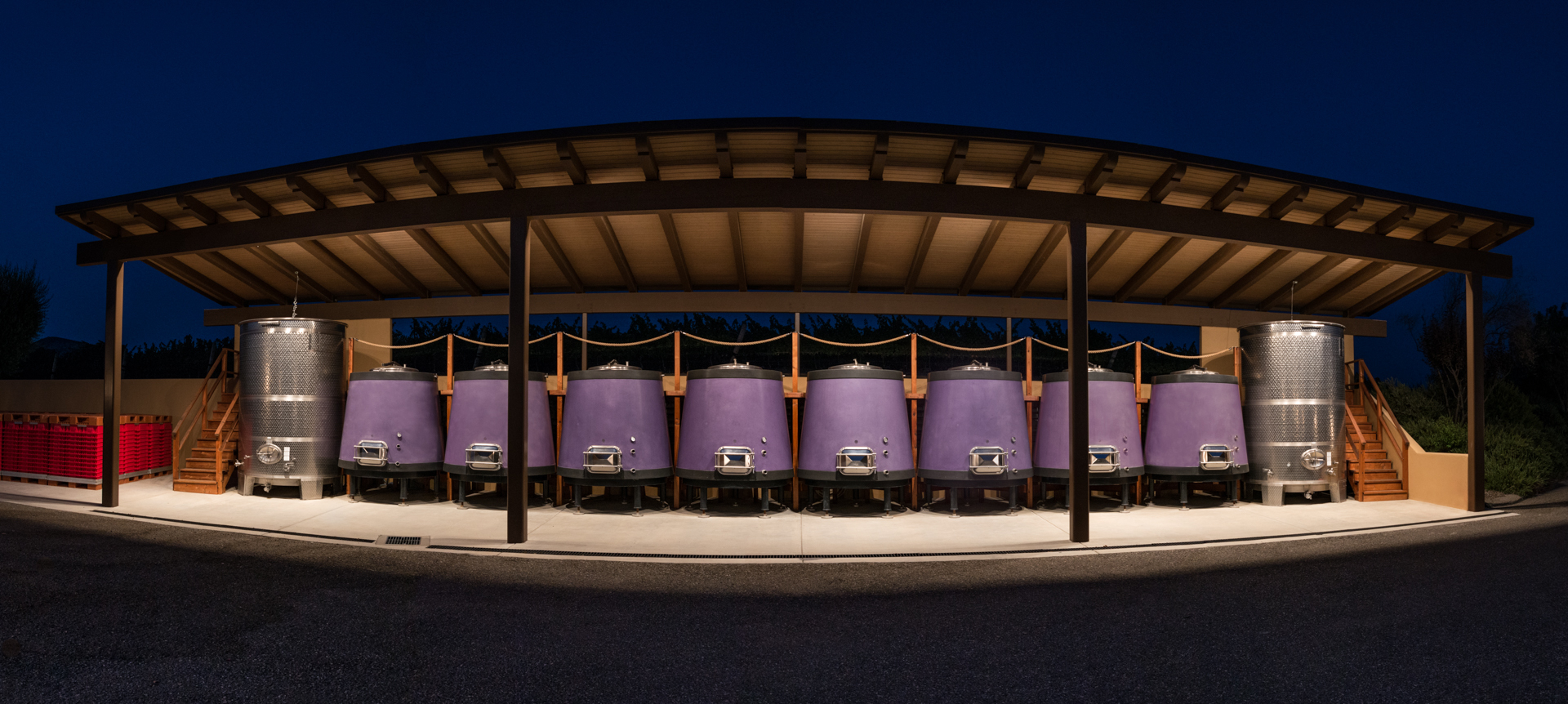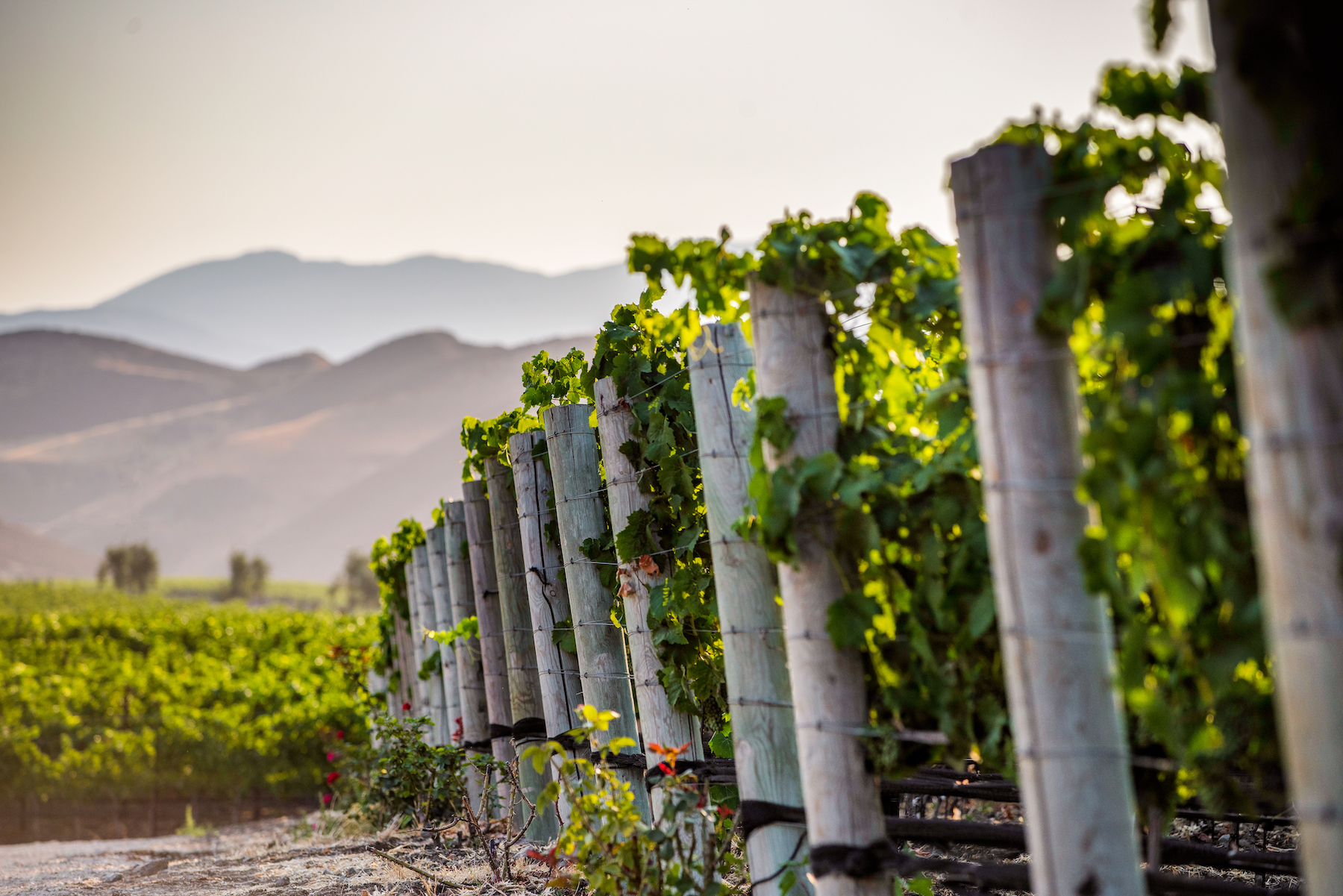HAPPY CANYON: AN AVA, HOME TO CROWN POINT VINEYARDS
Legend has it that Happy Canyon in Santa Barbara County was named during Prohibition when moonshiners took up residence and began producing bootleg alcohol in high demand among the locals. Little did they know that this area would later become renowned for its quality fruit and wines, catching the attention of respected winemakers and collectors. In 2009, Happy Canyon was officially designated as an American Viticultural Area (AVA) due to its unique characteristics, distinguishing it from neighboring AVAs such as Santa Rita Hills and Ballard Canyon.
A distinguishing feature of Happy Canyon is the unique soil composition that sets it apart from the surrounding region. The gravelly loam is embedded with mineral-rich rocks with a calcium-to-magnesium ratio seldom found in vineyard soils. This helps limit vine vigor, resulting in smaller vines, clusters, and berries, reducing yields and producing exceptionally distinct wines.
Happy Canyon is far inland and sheltered by the Santa Ynez Mountains from the coastal chill neighboring AVAs face. This unique positioning allows for higher daytime temperatures, which ensure full maturation for later ripening grape varieties such as Cabernet Sauvignon, Cabernet Franc, Petit Verdot, Merlot, and Malbec. Vineyards closer to the ocean cannot grow these varieties as successfully due to cooler temperatures.
Due to its location in the unique Santa Ynez Valley, which is the longest east-west transverse valley along the Pacific Coast, Happy Canyon benefits from afternoon breezes and cooler evening temperatures. The cool air is channeled inland, preserving acidity and freshness in the grapes and resulting in exquisitely balanced flavors.
DIVERSE TERROIR OF CROWN POINT VINEYARDS
Millions of years prior to human existence, seismic activity shaped the California coast, resulting in the Santa Ynez Fault and the creation of one of the few transverse valleys in the world that runs east to west. Although winemakers didn’t arrive in the area until much later, the land had already transformed, laying the foundation for developing its unique terroir.
Happy Canyon’s distinct landscape, located on the eastern edge of the Santa Ynez Valley, is characterized by rugged terrain with diverse soils and mineral-rich rocks, making it a unique and desirable location for our vineyards. The soil makeup ranges from sandy gravel to loam and is dotted with chert and serpentine rocks, distinguishing it from surrounding vineyards. The hills, riverbeds, and creek basins have accumulated large fields of oblong stones from ancient waterways and climatic activity, further enhancing the terroir.
The rocky terrain and gravelly loam enable excellent drainage, compelling grapevine roots to spread out and diligently seek nutrients. This increases the root-to-soil surface area, allowing for greater nutrient absorption by the grapes while regulating water intake. If grapevines receive too much water, it promotes leaf growth but does not benefit the fruit, resulting in characterless and plump grapes. However, when vines are forced to forage for nutrients, yields are naturally limited, producing smaller berries with more concentrated flavors. This is crucial in producing exceptional wines that can age well over time.
When establishing a vineyard, site selection and soil composition are crucial factors that significantly affect wine quality. It is for these reasons that Roger Bower founded Crown Point Vineyards in Happy Canyon to produce wines that showcase the unique character of the region.


